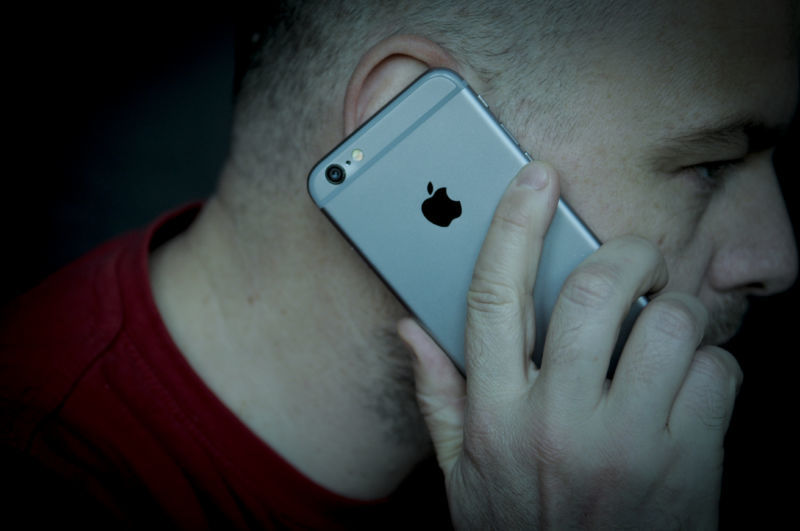
Is using a cell phone safe? While it’s ostensibly a question requiring a simple yes or no, the answers have turned out to be more of a Rorschach test: people see what they want to in them. The vast majority of cell phone safety research indicates there’s no problem with regular exposure to the radio-frequency radiation that cell phones use to communicate with towers. But enough studies have shown various health effects that fears of health risks have persisted—even though different studies often identify unrelated risks.
The US government’s National Toxicology Program designed what could have been a definitive study, using long-term exposure of large rodent populations. But even that has caused more problems than it has solved, as the NTP decided to release incomplete results from the study that seemed to find some links to cancer, but the work had problems with weak statistical significance and unexplained deaths in the control animals.
Today, a draft of a more complete version of the NTP study was released, and it’s even more of a mess. An original risk disappeared into the statistical noise, a new one emerged, and the strange death of control animals remains unexplained.
Lab rats
While studies were done with both rats and mice, the rat studies were more comprehensive. Groups of 105 male and 105 female mice were exposed to different levels of GSM or CDMA cell phone signals for nine hours a day, starting in utero. Not only were the lengths of exposure very large, but the intensity of the exposure was extreme, starting at the highest legal maximum exposure level (1.5 watts per kilogram) and going up in steps to four times that amount. If there is a health effect from cell phone exposure, this should make it pretty obvious.
But again, there were technical problems. Rats in one of the male control groups died at unusually high rates (the lowest survival of any exposed group was 48 percent at two years, only 28 percent of the control rats lived that long). Since cancer incidence increases with age, that has the potential to throw off all the results.
And, in fact, there’s striking evidence that it did. In female rats, where control group survival was normal, there was no statistically significant increase in any cancers. In fact, in the groups exposed to CDMA signals, there were no incidents of cancer found whatsoever after two years of excessive exposure. Cancers were found among the females that were exposed to GSM signals but not at a rate that was statistically different from that seen in control animals. Plus, there was no indication of any dose effect.
Males, where the control group died at an unusual rate, saw a large variety of problems, although again most weren’t statistically significant. Only one type of cancer that affects the heart, called a malignant schwannoma, increased at statistically significant levels. There may have been a hint of a dose effect here, as those that received the very highest exposure showed an elevated incidence.
Notably, the preliminary study released earlier highlighted a higher rate of a type of brain cancer called a glioma. Gliomas, however, fell into the “no significant difference” category now that the study has been completed. The change raises further questions about why the NTP released the preliminary report at all.
Spin
To sum up the findings: a bunch of cancers that aren’t statistically different from those found in the control group; a high-fatality control group; an elevated incidence of a single type of cancer, only in males, at exposures that are well above any that a human should experience.
Meanwhile, nothing unusual at all was seen in the mice. And the report still hasn’t been through formal review yet, which may result in changes to how the results are presented.
This all sounds like the latest case of a study showing no hazards from cell phone use while simultaneously providing those inclined to believe cell phones are a problem with a tiny sliver of a reason to keep thinking that.
But that’s not, however, how this is playing out. An NTP senior scientist, John Bucher, acknowledged that “the levels and duration of exposure to RFR were much greater than what people experience with even the highest level of cell phone use, and exposed the rodents’ whole bodies. So, these findings should not be directly extrapolated to human cell phone usage.”
Beyond that, the organization isn’t saying much about the results. But in the report’s conclusions, the one statistically significant result is termed “some evidence of carcinogenic activity.” All the results that are indistinguishable from noise are presented as “some evidence of carcinogenic activity.”
Such a conclusion is having about the effect you’d expect among people convinced that cell phones are a hazard. An organization called the Environmental Working Group sent out a statement that misrepresented the results. “The research found that male rats exposed to radio-frequency radiation had a greater chance of developing malignant brain cancer, tumors in the heart and tumors in other organs,” the EWG claimed. The group also contradicted the NTP scientist’s statement, claiming, “The amount of radiation to which the laboratory animals were exposed included the levels emitted by cellphones millions of people use every day.”
Meanwhile, the FDA isn’t buying it. Jeffrey Shuren, the director of its Center for Devices and Radiological Health, issued a statement in which he called the study’s results “mostly equivocal, or ambiguous” before going on to say, “I want to underscore that based on our ongoing evaluation of this issue and taking into account all available scientific evidence we have received, we have not found sufficient evidence that there are adverse health effects in humans caused by exposures at or under the current radio-frequency energy exposure limits.”
Expect this to all happen again when the report clears its final review.
https://arstechnica.com/?p=1253923

